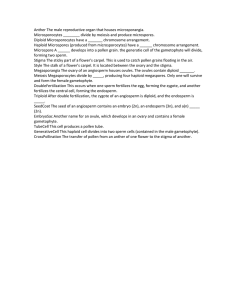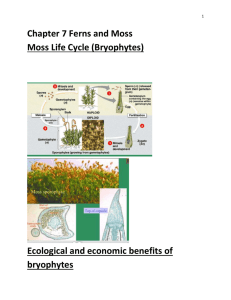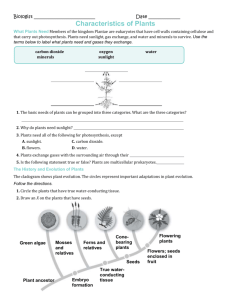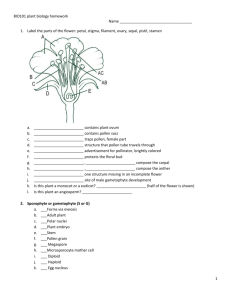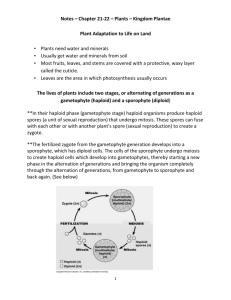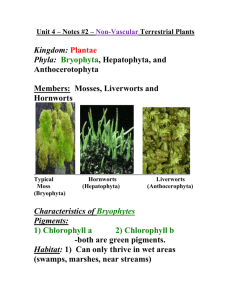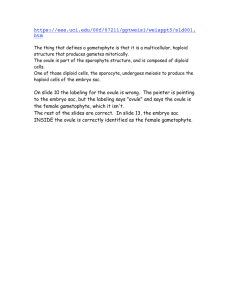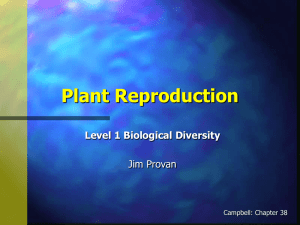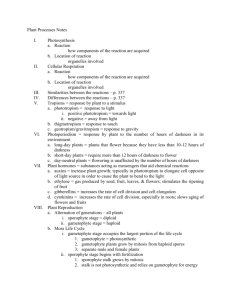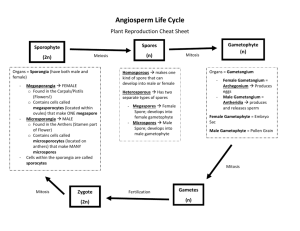LIFE-CYCLES of the GREEN PLANTS Algae, Moss, Selaginella
advertisement
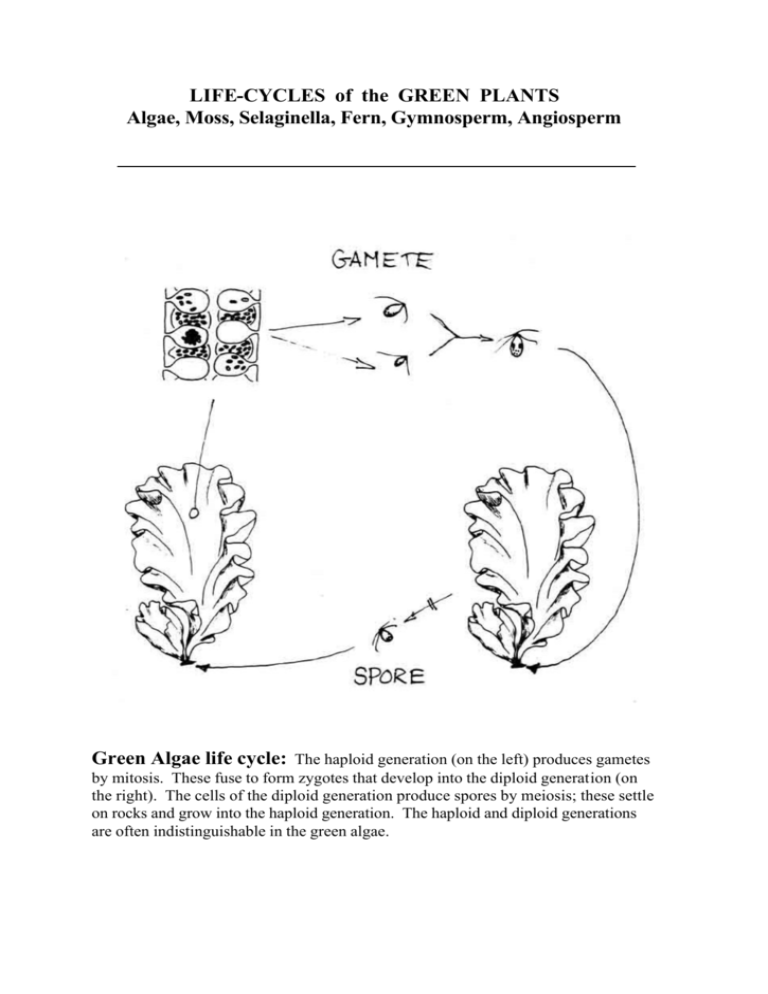
LIFE-CYCLES of the GREEN PLANTS Algae, Moss, Selaginella, Fern, Gymnosperm, Angiosperm Green Algae life cycle: The haploid generation (on the left) produces gametes by mitosis. These fuse to form zygotes that develop into the diploid generation (on the right). The cells of the diploid generation produce spores by meiosis; these settle on rocks and grow into the haploid generation. The haploid and diploid generations are often indistinguishable in the green algae. Moss life cycle: The Gametophyte (top) is the conspicuous generation. Archegonia and antheridia are produced at the apex of the Gametophyte (haploid plant). When a droplet of rainwater falls into the apex, the spermatozoids are released and swim into the archegonia, at the bottom of which sits the egg cell. After fertilisation the Sporophyte (diploid plant) grows on the gametophyte, from which it derives all its sustenance (parasitic). Meiosis occurs in the capsule, producing haploid spores. Selaginella life cycle: Gametophyte produces Mega- and Micro-spores. The megaspores split open to reveal the female gametophyte. The Microspores develop many 100’s of motile sperm, and when the spore bursts in contact with water these swim to the female gametophytes. This is a parallel to the situation we see in seed plants, in which the gametophyte is retained within the sporophyte. Fern life cycle: The Sporophyte (top) is the conspicuous generation. The sporophyte germinates from the base of the prothallus. Meiosis occurs within the sporangia. Gymnosperm life cycle: The male cones produce pollen grains which are gametophyte plants, containing 3 nuclei. The female cones produce embryo sacs within ovules, which contain many 1000’s of haploid cells, and develop 2-5 archegonia, each containing an egg cell, at the micropylar end. Pollination occurs 12 months before fertilisation (in the case of pine). Pollen grains must blow into the female cone and become attached to the pollination droplet. The pollen tubes develop while the seed coat and endosperm grows. The male gamete is released the following spring, thus the seed grows first, THEN the embryo. The embryos grow competitively if more than one archegonia is fertilised. Angiosperm life cycle: The anthers produce pollen grains which are gametophyte plants, containing 3 nuclei. The ovules contain a single spore mother cell that divides meiotically to produce 4 haploid cells, three of which abort. The last develops into an embryo sac which contains 8 nuclei. One of these is the egg cell, 2 are endosperm nuclei. The pollen grain germinates on a stigma, and the tube grows down the style to the ovule. While migrating down the pollen tube, the gamete divides (mitotically) into two. One of these fuses with the egg cell to make a zygote (which will become the embryo) the other fuses with the two endosperm nuclei to make a triploid nucleus (3n) that will develop into the endosperm. This DOUBLE FERTILISATION means that a seed only grows if there is an embryo. Thus the two tissues (embryo & endosperm) grow at the SAME time.
